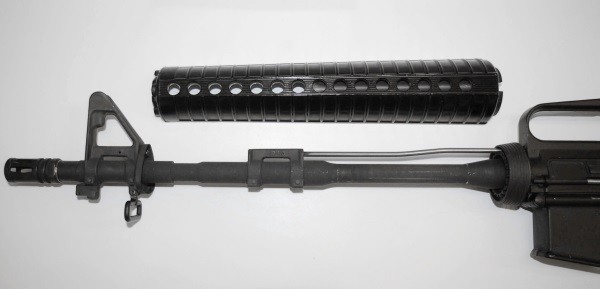What Do You Need To Know About AR15 Gas Tubes?
AR15 gas tubes are often very misunderstood. Ask your average shooter to describe the system and watch them come up with all kinds of convoluted descriptions of “tubes along the top” and “little holes”, or even “something to do with gas”. But never fear, sit back and let use walk you round this essential but mysterious section of your AR rifle.
Fundamentally, the gas port is part of a system of operation used to extract energy from the spent round and divert it to operate autoloading function. In a rifle gas-operation system such as in the AR design, a portion of high-pressure gas from the cartridge being fired is used to power a mechanism to extract the spent case and chamber a new cartridge. And this happens every time the rifle is fired.
While there are some differences between the world’s gas-operated rifles, they generally take a little of the expanding gas from the barrel as the bullet passes, and transfer it along the gas tube and back to the bolt carrier group (BCG), where it essentially operates the mechanism. This is known as a direct impingement system. In a functional way, this direct impingement system is a uniquely circular system that continues to run for as long as the operator continues to pull the trigger and/or the ammunition becomes exhausted.
So, this means that there has to be a direct line between the start of the barrel section and the bolt carrier group, and that is where the gas tube comes in. Sitting atop the barrel and, because the barrel is a customizable part, the gas tube is equally replaceable.
The design of the AR15/AR10 has made it the gold standard in aftermarket parts and modified weapons. There is a huge industry behind the customization of the AR range and there are always new parts becoming available. The fact that the AR can be effectively broken down and rebuilt with many new parts is its strength, but it can also be a big weakness, particularly if the builder doesn’t really understand what they are doing.
In truth, there are actually few after-market parts that can upset the overall operation and workings of your gun, but the gas tube is definitely one of them, and they are best left alone if you don’t really know what you are doing. The main problem with gas tubes is their length, and if you are changing your barrel for an aftermarket one of a different length, you’ll need to change your gas tube too and that is where problems can start. The actual length of the gas tube, it seems, is highly important to the gun’s operation, and messing with it can have profound ramifications.
With the AR-15, the gas block is located up near the front sight and connects to the bolt carrier group through a gas tube concealed underneath the integral handguard. Since the gas system runs across most of the upper receiver, you’ll gain the best results when you use a gas tube made in the correct size. Here is what can happen if you get it wrong:
-
Too short:
If your rifle has a gas system that is too short, you’ll have too much gas flowing back into your receiver. When you over-gas an AR-15, it creates more recoil in the weapon, putting extra wear on you and your components as well as pumping extra dirty your gun. -
Too long:
When you use a gas system that is too long, you will prevent sufficient gas from making its way back in. Without enough force, the BCG will have trouble extracting casings and chambering the next round. In short, your gun may jam a whole lot more as spent cases get stuck in the ejector system.
So, you have to make sure that the gas tube that you fit to go with your new barrel is the correct length for the rest of the gun. There are a number of standard gas systems available.
-
Pistol-length:
The pistol length gas system is the shortest of the gas systems and is on average only 4.5 inches -
Carbine-length:
A carbine length gas system is the most common and has a gas tube about 7.5 inches long. AR-15s with shorter 10-18-inch barrels function their best when paired with a carbine-length gas system. -
Mid-length:
These systems are a little bit longer and measure in at approximately 9.5 inches. Carbines with barrels 14 to 20 inches long will deliver optimal results with mid-length gas systems. -
Rifle-length:
The longest of the three, rifle-length gas systems use gas tubes close to 13 inches long. You should install rifle-length gas systems on marksman-style AR-15s with barrels 20 inches or longer.
As you see, there are plenty of different gas tubes available. Get the right gas tube and ensued that your AR15/AR10 works in the way that it was designed, get it wrong, and suffer with it eternally.

